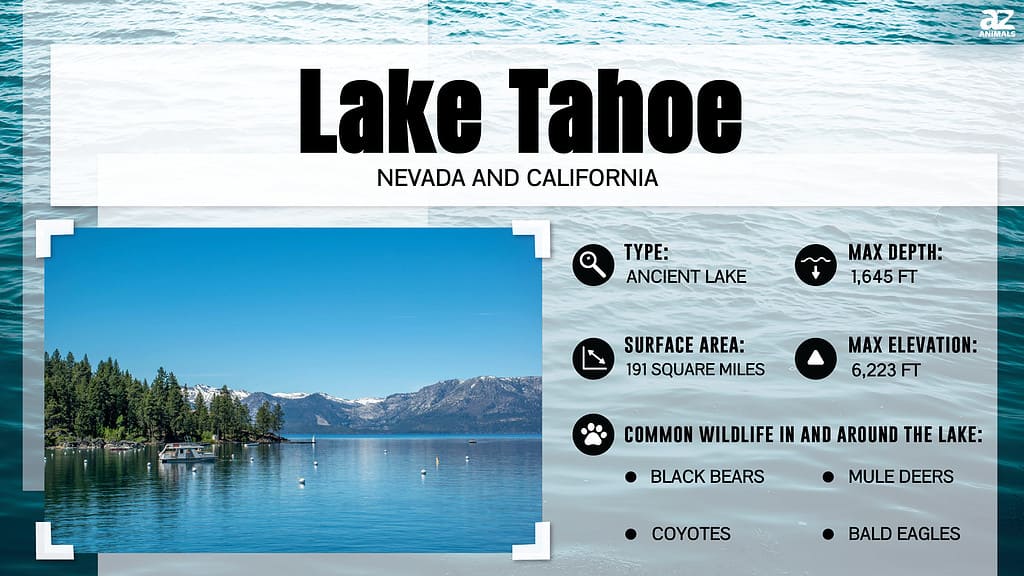
Lake Tahoe brings people from all over the world to its shores for outdoor fun. If you are close to the Sierra Nevada, you’ve probably spent a summer or two hiking, fishing, and jet skiing on this famous lake. However, many don’t realize the dark history its water holds.
Amateur explorers have spent decades trying to uncover the secrets about what lives at the bottom of Lake Tahoe; were any successful? Find out why this lake is so dangerous and what actually lurks in its depths.
What is Lake Tahoe?
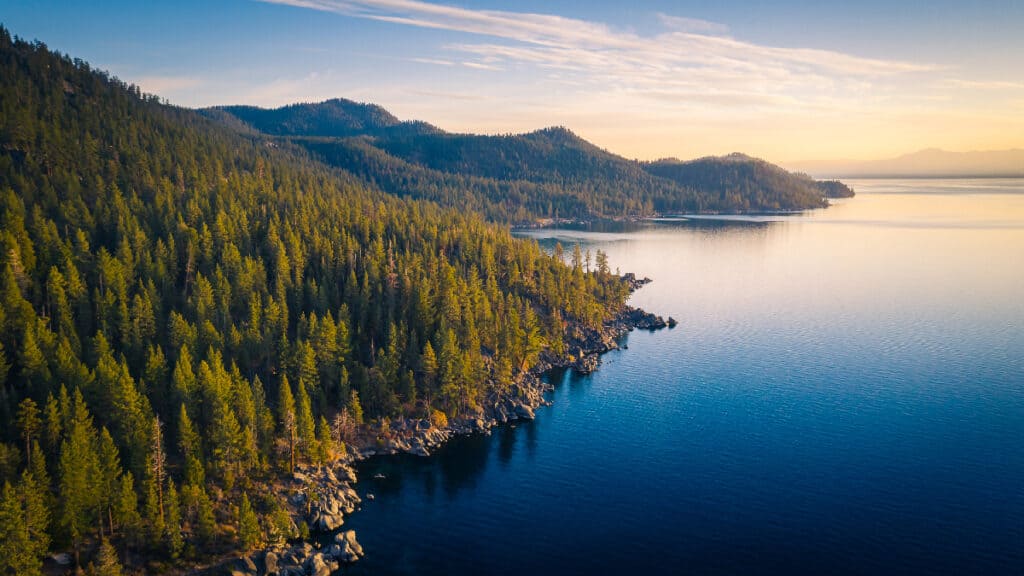
Lake Tahoe is the largest alpine lake in North America and the second deepest in the country.
©iStock.com/heyengel
Lake Tahoe is a large freshwater lake straddling the state line between California and Nevada. It is the largest Alpine lake (a lake at high altitude) in North America and the second-deepest lake in the country (over 1600 feet). The Lake Tahoe Basin formed two million years ago, and the ice age helped create its modern shape.
The first Europeans to discover Lake Tahoe was in 1844, but the Washoe Native Americans had inhabited the Tahoe area, the heart of their territory, for 6,000 years. During the mid to late 1800s, settlers moving west used the lake’s abundant resources for transportation and logging. It wasn’t until the 20th century that officials realized the area’s potential for recreation and luxury vacation homes.
The area is stunning. People flock to this lake because of its water clarity and the panoramic views of lush mountains on all sides. It’s a local marvel featuring recreation for all seasons. On the Nevada shore, you will even find lakeside casino resorts and restaurants.
Mysteries of Lake Tahoe
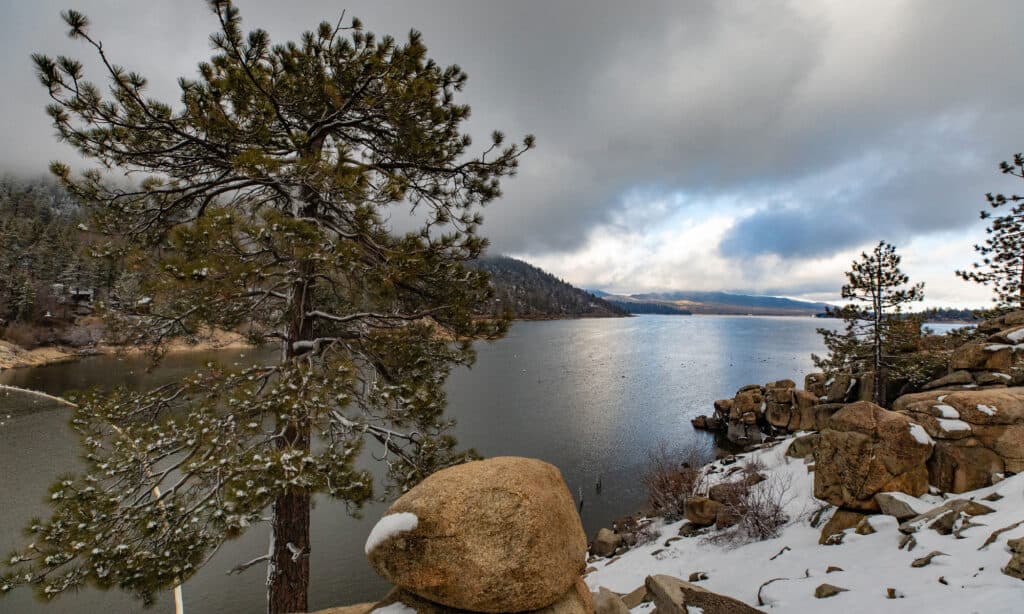
People speculate over 200 bodies are at the bottom of Lake Tahoe.
©iStock.com/Rcview_cinematography
For years, people suspected Lake Tahoe was a dumping ground for the mob. Stories circulated of cement blocks tied to those who crossed them and were thrown in the middle of the lake. People also speculated that instead of paying Chinese immigrants for their railroad work, they were tied together and sunk to the bottom of the lake, still alive.
Experts estimated that over 200 bodies could be preserved at the bottom due to the frigid temperatures. Jacques Cousteau, a French oceanographer, traveled to the depths of Lake Tahoe in the 1970s. Afterward, reporters asked him what he found, and he replied, “The world isn’t ready for what’s down there.”
Some believe he saw a giant lake monster prowling deep below the surface, while others think he found the bodies of people still dressed in clothing from the 1920s through the 1960s. Some even speculate he was never at Lake Tahoe. Was the truth ever brought to light, or are these claims unfounded?
What Lives at the Bottom of Lake Tahoe?
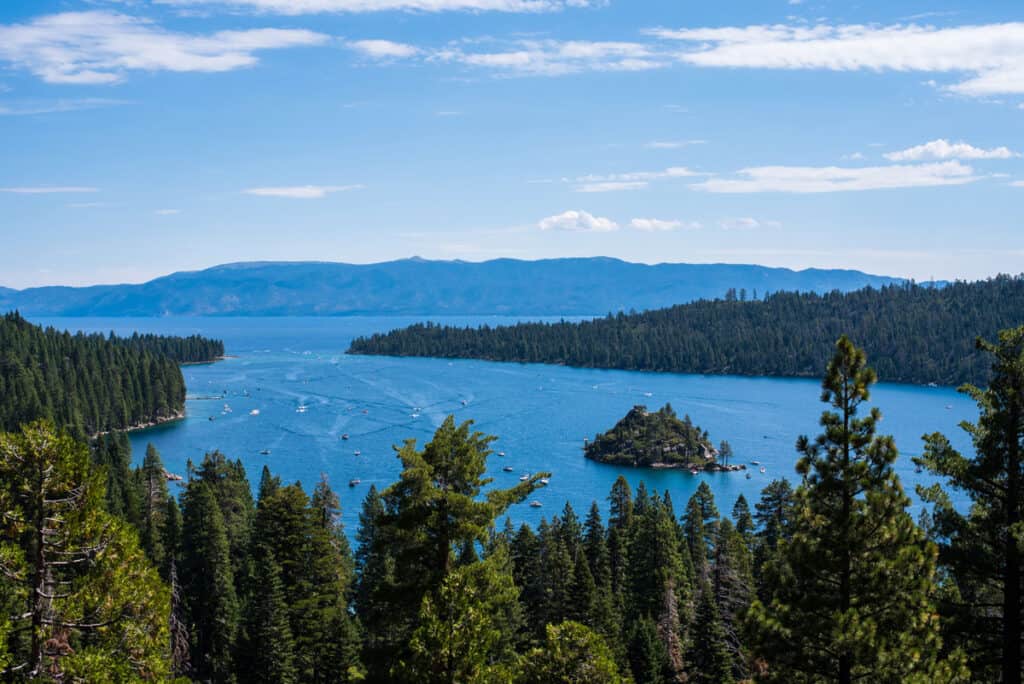
It is unknown what lives at the bottom of Lake Tahoe. The most recent dive uncovered ship wreckage and tons of trash.
©iStock.com/Poly Isepan
It is unknown what lives at the bottom of Lake Tahoe. Professional divers with the Undersea Voyager Project have made 58 submarine trips and 33 scuba dives to the bottom of the lake and smaller adjacent lakes. So far, their discoveries include a diamond ring, possible ship wreckage, and over 25,000 pounds of trash. However, Fallen Leaf Lake, about one-mile southwest of Tahoe, contains an ancient underwater forest with 80-foot tall trees from 2,000 years ago.
One Californian man was so interested to find out what lives 1600 feet down from the surface that he fashioned a camera into a container able to withstand intense pressure and lowered it down to the bottom (around 1100 feet). While viewing the footage, he caught a blurry image of a white-bellied creature that moved remarkably like a bull shark. However, bull sharks can’t live in these extreme depths. Scientists also believe it could have been a large lake trout.
Unfortunately, without extensive dives and research, we won’t know what lives at the bottom of Lake Tahoe. Many believe there are, without a doubt, many known and unknown creatures in this massive lake.
The Scariest Creatures Near Lake Tahoe
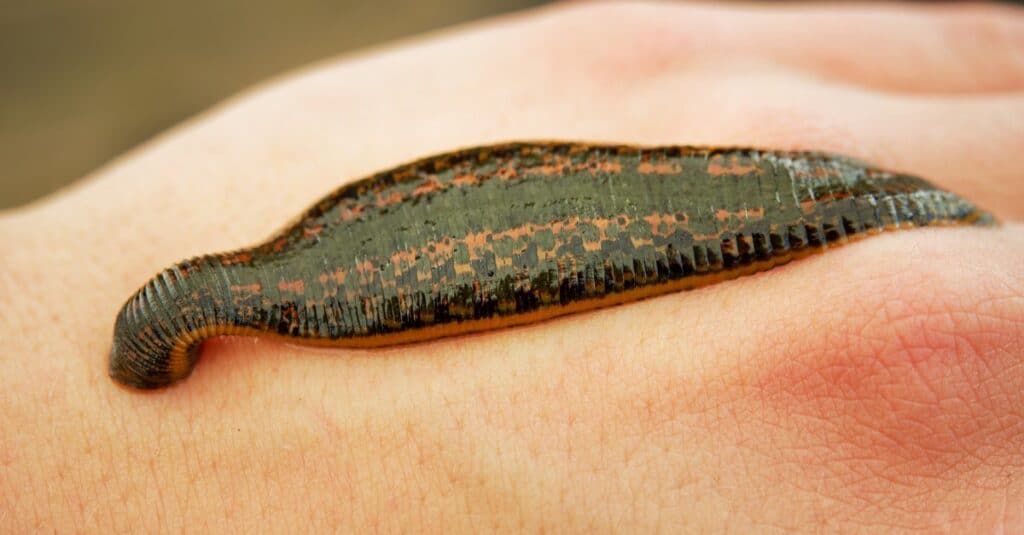
Rattlesnakes, leeches, and giant goldfish inhabit the areas around Lake Tahoe.
©Martin Pelanek/Shutterstock.com
Rattlesnakes
These large, venomous snakes inhabit the Lake Tahoe basin, and you can often see them during the spring after hibernation. The Great Basin rattlesnake inhabits Northeastern California and a small region near the Sierra Nevada. Most rattlesnakes will leave people alone but may bite when threatened or frightened. While you may not find these snakes in the water, they can be in grassy areas near the lake’s shore. It is common to see harmless garter snakes in Lake Tahoe.
Leeches
Spooner Lake, an artificial reservoir inside Lake Tahoe-Nevada State Park, contains pesky leeches. These bloodsucking creatures inhabit many lakes and waterways throughout California. Although not particularly harmful to humans, they are a nuisance. Their bites can cause allergic reactions and possibly introduce bacteria. Officials don’t recommend you swim in this area of the lake.
Giant Goldfish
Goldfish may not be scary, but you might get startled if you see a giant one in the middle of a lake. Researchers found one almost 1.5 feet long, weighing over 4 pounds. They believe that aquarium owners dumped them in the lake when they were much smaller, and the fish are now spawning and schooling. Goldfish are an invasive species and can interfere with the delicate lake ecosystem.
Is Lake Tahoe Dangerous?
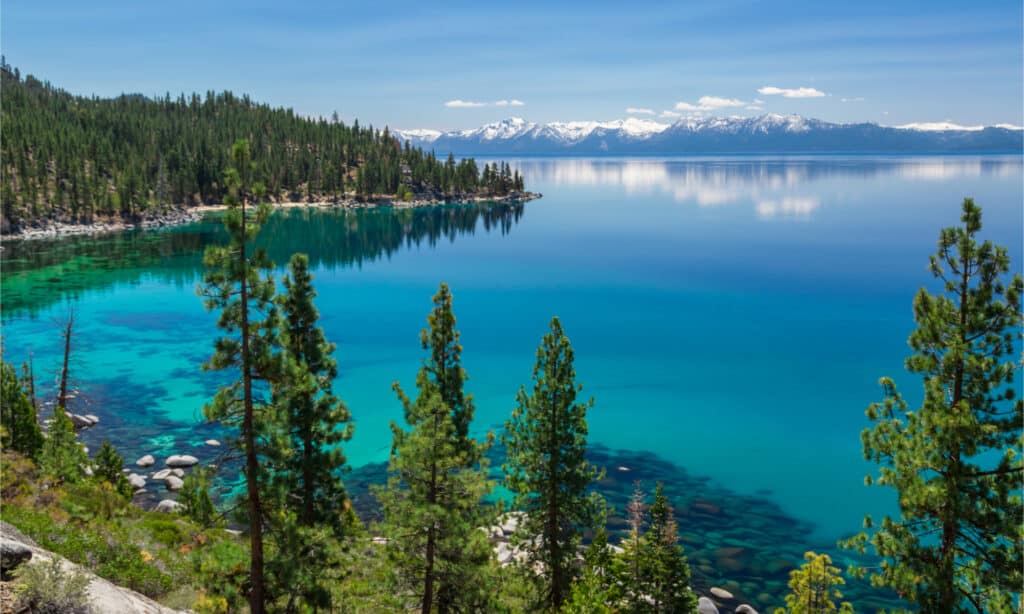
An average of seven people die in Lake Tahoe every year. Drowning is the most common cause of death.
©topseller/Shutterstock.com
Over the last few years, divers have found several bodies in Lake Tahoe. A team of scuba divers found a preserved body of a man that disappeared 17 years prior. Examiners suspect he ran out of oxygen or possibly had a heart attack or stroke when trying to surface. In 2021, a local homeless woman was found dead, lying on the shallow lake floor. Her cause of death is unknown. There is no telling how many bodies are in the cold water of Lake Tahoe.
An average of seven people die in Lake Tahoe yearly. Cold water shock is a common problem in the area. Many people don’t realize how freezing the water is until they are thrown into it and experience an involuntary gasp reflex. This reflex causes rapid breathing, gasping, fainting, muscle failure, and an immediate risk of drowning. Cold water and high altitude provide a different and dangerous water experience many can’t properly handle.
Up Next…
- Discover the Largest Sinkhole In The World: Lakes are certainly beautiful and mysterious – sinkholes are just downright horrifying!
- The 5 Most Beautiful Lakes in the United States: Lake Tahoe is a lovely destination – explore more beautiful American lakes!
- What is a Lake? 5 Features that Define a Lake: Just what does classify a body of water as a lake and not a sea? Find out!
The photo featured at the top of this post is © iStock.com/heyengel
Thank you for reading! Have some feedback for us? Contact the AZ Animals editorial team.






